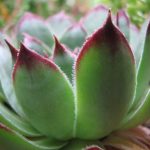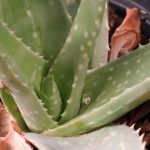Discover the secrets to caring for the diverse range of succulents known as ice plants and ensure they flourish in your garden with these helpful tips!
Quick Care Guide
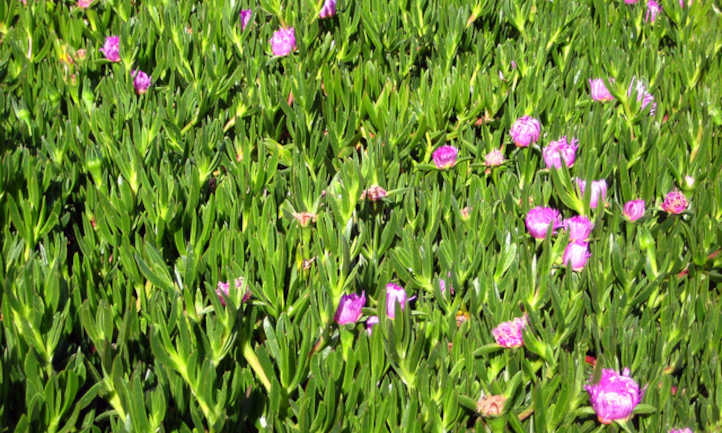

All About The Ice Plant


Ice plants, commonly known as succulents, come in a variety of species under the Aizoaceae family, resembling ice crystals under the sun. They thrive in hot climates and serve as excellent ground covers in desert gardens. Ice plants are low-maintenance and add vibrant colors to your landscape, making them a perfect summer addition to your outdoor space.
These plants, originating from Africa, prefer arid conditions and sandy, well-draining soil. They are resistant to drought and are suitable for hot and sunny environments. Ice plants, such as Delosperma and Lampranthus genera, are known for their colorful flowers and spreading growth habit, making them ideal for borders, containers, and erosion control.
Ice plants, with their unique growth patterns and propagation ease, provide an eye-catching display with flowers in various shades like yellow, orange, pink, purple, and white. Their delicate appearance and resilience to neglect once established make them a popular choice for gardeners seeking a hassle-free plant to enhance their outdoor spaces.
Discover the diverse range of ice plant species, from Delosperma cooperi to Carpobrotus edulis, each offering its own unique characteristics and charm. With proper care and attention to their specific needs, ice plants can thrive and bring a touch of elegance to your garden.
A foliage is well known for each stem, resembling Portulaca or String of Bananas, typically green while possibly turning a plummy purple in colder months. Despite its evergreen nature, ice plants may shed some foliage during harsh winters.
The ice plant showcases consistent blooms from late spring to early fall, varying by species, with each bloom boasting 1-2 inch diameters and the potential to bear up to 100 petals. Long-blooming and icy, these petals are slender and encompass white centers brimming with hairy stamens.
Deer-resistant and butterfly-attracting, the ice plant is also edible, with its evergreen leaves delivering a crisp texture suitable for salads. Given the broad spectrum of plants under this name, it’s advisable to verify the edibility of the specific species you possess.
Ice Plant Care
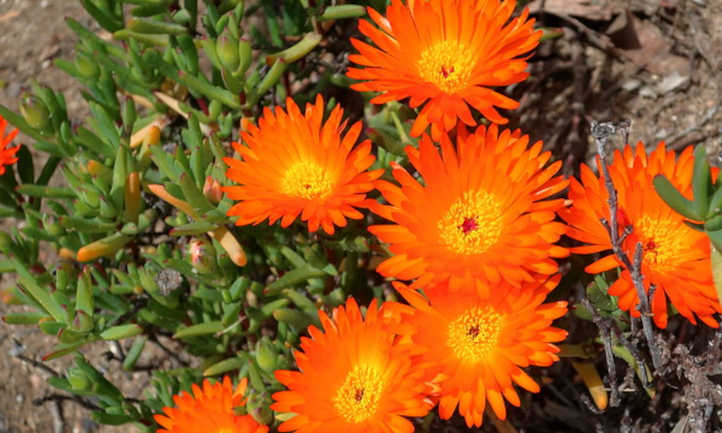
While ice plants are low-maintenance, specific needs must be fulfilled to ensure their well-being. We’ll delve into what ice plants prefer and equally essential, what they detest.
Sun and Temperature
Thriving in full sun, ice plants may tolerate occasional light shade, yet abundant sunlight brings out the best in these floral crystals. Likewise, they favor warm conditions, as even the hardiest ice plant species lack significant cold resistance.
For regions with hot, arid climates, fall planting is preferable over mid-spring or summer to allow the perennial to establish roots before peak heat. Conversely, in colder climates, aim for mid-summer establishment before winter frost sets in. Consider cultivating cold-hardy ice plants in containers for easy relocation indoors when temperatures plummet, facilitating better control over soil moisture levels.
Water and Humidity
Although touted as drought-tolerant, ice plants actually thrive in drought conditions. Water sparingly every few weeks unless experiencing extreme heat. Ensure the soil dries out entirely before deep, infrequent watering.
Throughout winter, reduce watering starting in late fall, refraining from watering during snowy or frosty periods to prevent freezing. While leaves may shrink due to decreased moisture, it’s preferable to safeguard against internal freezing.
Avoid excessive humidity for ice plants, as it can attract pests and induce rot. Place your ice plant in a dry location, promoting adequate air circulation within the foliage through regular pruning.
Soil

Alongside sunlight, soil composition significantly influences ice plant growth. Opt for sandy, well-draining soil, as ice plants struggle to thrive in clay-based mediums, especially crucial in cold climates during winter. Excessive moisture retention in the soil can rapidly deteriorate roots in colder conditions.
Preferably, plant ice plants in nutrient-poor soil or rocky terrains, with the option to introduce organic matter if growth is sluggish. During winter, consider mulching with straw, pine needles, or frost blankets to regulate soil moisture and shield against excess cold.
Fertilizing
Fertilizing ice plants is not imperative; however, occasional supplementation might be necessary if growth stagnates or flowering diminishes. Employ a fertilizer with slightly elevated phosphorus levels, such as a 1-3-2 ratio, avoiding excessive phosphorous application as nitrogen and potassium are equally vital for flowering.
Pruning
While not compulsory, periodic pruning aids in maintaining ground cover cleanliness and preventing pest issues. Deadhead ice plant flowers in mid-spring, eliminating any winter-damaged stems. Thinning dense ground covers during summer promotes adequate air circulation.
Propagating Ice Plants
Propagation of ice plants through cuttings, common among succulents, is straightforward. Divide plants along rooted shoots in late spring, relocating them to new sites for independent growth. Although hardy ice plants can self-seed, propagation via cuttings remains a quicker and simpler method.
Troubleshooting
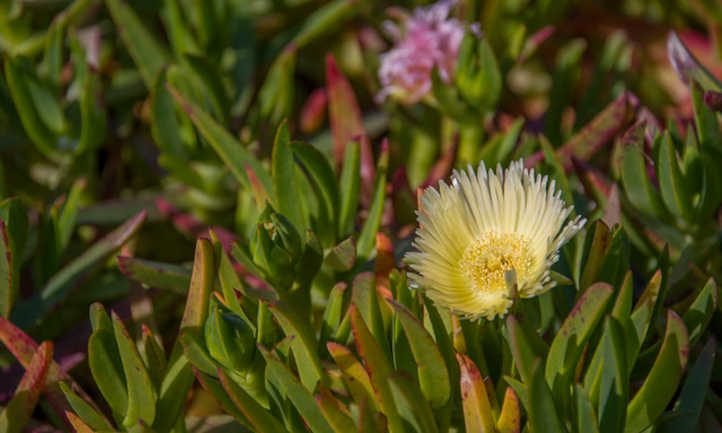
Aside from their low-maintenance attributes, ice plants seldom encounter issues, maintaining a hassle-free demeanor. In rare instances of trouble, here’s a glimpse into potential challenges you might face.
Growing Problems
As with most succulents, caution against overwatering and root rot. Excessive moisture can cause ice plant foliage to wither, yellow, and eventually perish. Water sparingly and ensure well-drained soil to prevent overhydration, promptly transferring any affected plants to drier conditions if signs of overwatering emerge.
Another common succulent woe, etiolation, may affect ice plants lacking adequate sunlight, leading to elongated growth.
Lighting
When ice plants don’t get enough light, they tend to grow leggy and develop gaps in their ground cover. Unfortunately, once the stems have stretched out due to lack of light, they won’t revert to their original form with just increased light exposure. The best solution is to trim back the leggy growth and ensure the plant receives ample sunlight for new growth.
Pests
The common culprits to watch out for are aphids and mealybugs. These pests are naturally attracted to succulents due to the rich plant sap they provide. An infestation of aphids or mealybugs can hinder the growth of your ice plant, causing wilting foliage and potential plant demise.
Using neem oil acts as a repellent for these pests, alongside options such as insecticidal soap or diatomaceous earth. In severe cases, resort to pyrethrin spray or spinosad spray. However, prevention is key. Keep debris away from the ice plant and avoid overwatering to deter infestations.
Diseases
Ice plants have recently faced challenges from a specific type of downy mildew. This fungus, identified in California in 2019, targets ice plants exclusively. It manifests as a blue-grey growth on foliage, deteriorating plant tissues.
Downy mildew thrives in cool, damp conditions, contrary to the requirements for healthy ice plant care. Eradicating this disease is complex, especially considering its recent emergence. While fungicides may help, complete recovery chances are slim. Preventive care remains the best defense against this disease.
Frequently Asked Questions
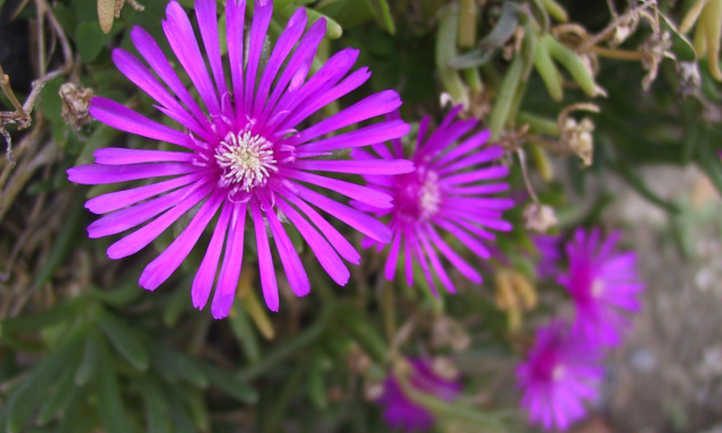

Q: Do ice plants return each year?
A: Ice plants are perennial in zones 5 and above, blooming reliably annually. Being evergreen, they maintain foliage even in winter.
Q: Is full sun essential for ice plants?
A: Absolutely! Providing direct sunlight ensures abundant blooming of purple ice plant flowers. While they tolerate light shade, a sunny, dry environment is preferred.
Q: Are ice plants invasive?
A: Generally not, except for Carpobrotus edulis, classified as invasive in California.
Q: How fast do ice plants spread?
A: Spread rates vary per species, but overall, ice plants grow rapidly, making them ideal for sunny slopes.
Q: Why are ice plants problematic in California?
A: Carpobrotus edulis, unlike other ice plant varieties, is invasive along the Californian coast. Delosperma and Lampranthus species are less troublesome.
Q: Should ice plants be deadheaded?
A: While not mandatory, deadheading spent flowers helps prevent pest and disease issues.
Q: Do ice plants attract bees?
A: Yes, bees, butterflies, and hummingbirds are drawn to ice plant daisy-like flowers.
Q: Are ice plants toxic?
A: Generally not. Some ice plant varieties are edible, but the slender ice plant is toxic to sheep.

